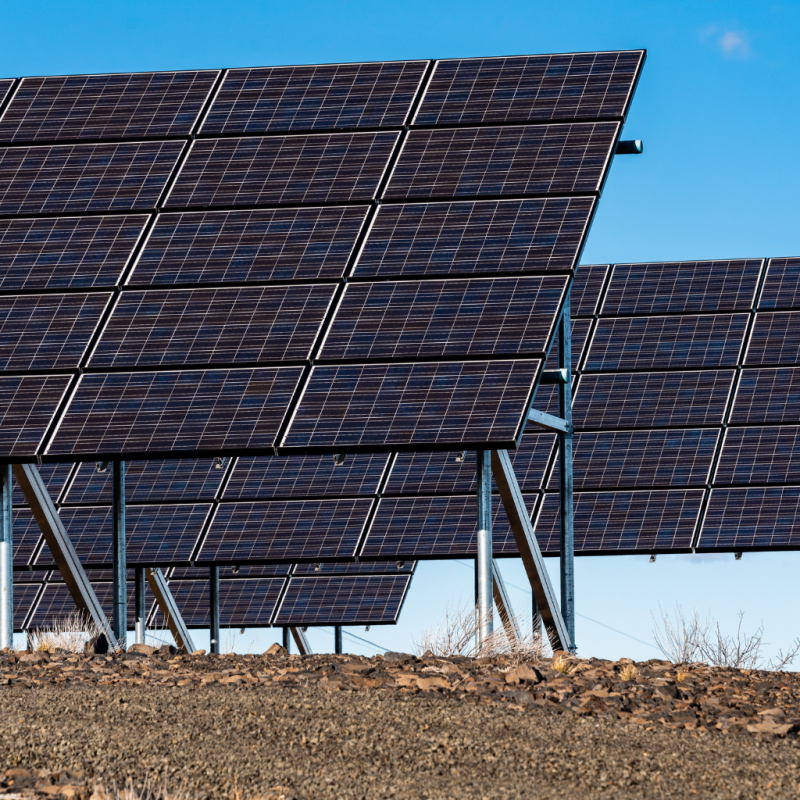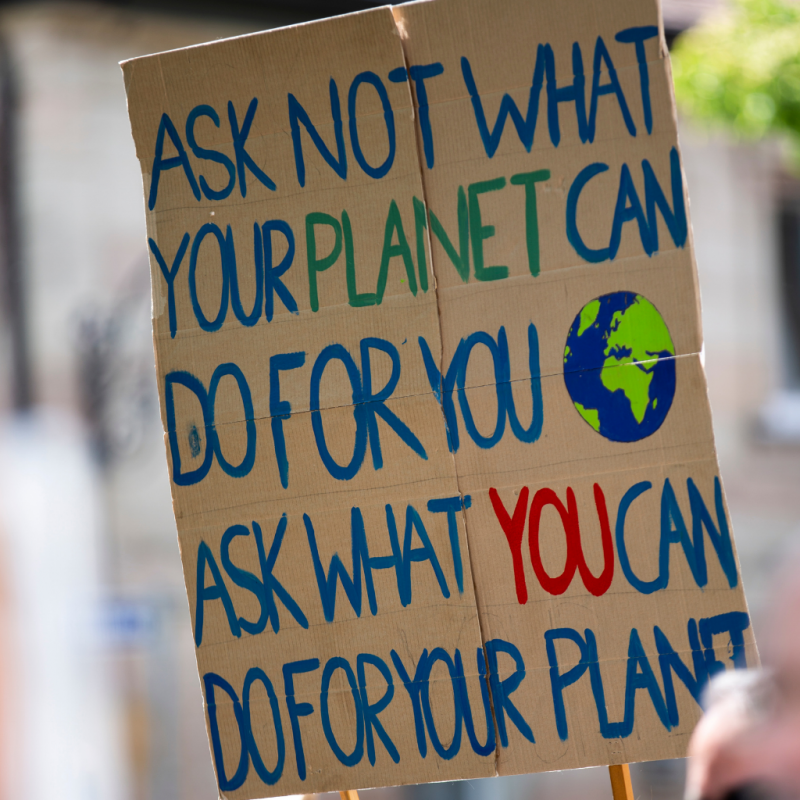January 28, 2021 – In January of last year, I made a few predictions about what I thought would happen during 2020 related to the carbon future in the realms of business, energy, and society. In retrospect, all predictions about what would happen in 2020 seem pretty ostentatious, but what did we know? Nowhere in those predictions did I include a global pandemic that would fundamentally change the way we live our lives.
Today, in spite of all that has changed due to the pandemic, I want to revisit those predictions and see how they fared. The predictions I made (none of which were Nostradamus-like in their vision, but more a reflection of the early 2020 trends and attitudes) were:
- More companies would publicly adopt ESG and sustainability commitments.
- Renewable energy deployment would continue to grow.
- Discussions around the role of microgrids and energy storage would increase.
- Financial investments in clean tech would increase.
- Climate activism would continue.
For the first prediction, companies adopting ESG and sustainability commitments, this was accurate. More than a dozen global companies signed The Climate Pledge, founded by Amazon and Global Optimism. While some signatories were already addressing sustainability within their operations separately – The Climate Pledge focuses on carbon emissions with regular reporting including Science Based Target Initiatives (SBTi), carbon elimination in line with the Paris Agreement, and the purchasing of Credible Offsets focused on Nature-Based Solutions, by 2040. Companies that are participating in The Climate Pledge include but are not limited to Best Buy, Mercedes Benz, Brooks, and Neste. Additionally, companies with previous sustainability commitments began revising their goals to include new initiatives, earlier deadlines, and greater details on how their goals will be achieved, like Disney and Google, which both updated their sustainability commitments in the Fall. Finally, within corporate commitments was the push by larger companies to address carbon and environmental impact reductions across their supply chain, as an acknowledgment that accountability and change has to come from all angles of business if we are to be successful. This has been a criticism of corporate commitment for a while, and it’s encouraging that there is this acknowledgement. While financially it can be easier for large companies to make the upfront investment in implementing climate change or sustainability initiatives, the transition for smaller companies can be more challenging during the initiation. With this push coming from across the supply chain, hopefully this will provide support and new approaches to companies that have been hesitant in investing. That said, commitment is one thing – verified actions are another entirely. We’ll see how well these commitments turn into action over the next few years.

For my second prediction, continued deployment growth for renewable energy, this was also accurate in encouraging ways. First, the solar market in the U.S. continues to expand, with 19 GW of solar power being installed in 2020 with 3 GW of that coming from residential installations. This marked a 43% year-over-year growth from 2019 for the industry. For wind in the U.S., we saw 23 GW of installation, and while no off-shore wind farms were commissioned in 2020, there is positive movement in that area from dropping costs, new geographic interest, and signals from suppliers of interest in operating off-shore wind farm manufacturing centers in the U.S. Renewables growth is the norm now, continuing to grow and overtake fossil energy, with wind and solar cost competitiveness the new normal. Now that we have the new normal, in terms of renewables, the next question is – what’s next?
Along those lines, the third prediction, increased discussions around microgrids and energy storage, was correct, if not slow moving. States continued to task utilities and regulators with further investments in energy storage. And battery storage in the U.S doubled in Q3, after being sidetracked due to the pandemic. Most of this battery storage use was out of California, where microgrids and battery storage are viewed as one of the potential solutions in curtailing the types of widespread electric power issues, including forest fires that have plagued the state in the past years, while still providing power to remote communities. From a global perspective, the U.S. is leading the adoption of grid-tied microgrids, as they are viewed as a way to provide energy security and resilience. Modular microgrids and the microgrid as a service model are continuing to grow as providers compete to enter the market. While those ‘maas’ providers are predominately providing power through fossil fuel or combined-heat-and-power, as solar-battery combinations improve and carbon emissions are accounted for and measured, those power sources will hopefully shift.
The fourth prediction, increased financial investments in clean tech, was partially correct. The financial investments in clean tech were largely delayed until the second half of the year, in response to the chaos of the COVID-19 pandemic. However, the market did see a shift in investment and venture cap funding opportunities towards clean tech that provides smaller improvements, not just heavy tech or complex mechanical solutions. This is a positive stop-gap approach, as all improvements in carbon emissions and clean tech are positive. Technology and processes can be marginally improved and still make an impact. Large-scale mechanical solutions to either removing carbon from the atmosphere or sequestering carbon into other materials, take years to bring to market at a scale to make an impact. Therefore, investing in technologies that make measurable and verifiable improvements and supporting those solutions through the development cycle is critical. We’ll see where this goes in the next couple of years, as there seems to be a large movement toward major investment in carbon removal technology. That’s great, but, let’s not forget about investment in deployment of existing tech that can provide major reductions as well (hello, methane!).

My final prediction for 2020 was continuing climate activism especially from youth movements built off of the Sunshine Movement, Friday’s for Freedom, Greta Thunberg, and Climate Strike. This prediction was most impacted by the COVID-19 pandemic which upended the passionate and large-scale protests and marches for climate change that were the hallmark of 2019, as well as the important shift in significant activism focus to the Black Lives Matter and racial justice movement. While there was still some activism and news coverage in the first months of the year, after the cascading global shut downs in February and March, these efforts became more subdued, although, no less effective. (As a side note – observing the impacts of shutdowns and economic slowdowns on carbon emissions has been interesting.)
From a political achievement perspective, the groups that have been organizing demands while coordinating peaceful protests have an opening with the Biden Administration in the U.S. The Biden Administration marks the first time a federal level candidate ran with a climate change policy as a major part of their policy proposal. Once elected, Biden became the first U.S. President to elevate addressing climate change to a cabinet level position, appointing John Kerry to United States Special Presidential Envoy for Climate, and Gina McCarthy to lead a new White Office on climate policy. Already in his first few days in office Biden has re-joined the Paris Agreement, halted the Keystone XL Pipeline, and paused new oil drilling on federal lands. Perhaps most importantly is the Administration’s acknowledgement that climate change issues disproportionately effect low-income and communities of color. The Administration has set up offices and policies to address the impact of disparities, including charging all Federal offices to review and address any internal policies enacted in the last four years that may be harming the environment and at- risk communities. While the pandemic impacted the large-scale protests of 2019, the hard work from activists, the buy in from congressional representatives, and presidential candidates have all built up to the platform that Biden has adopted and is putting into action today.
All in all, despite the COVID-19 pandemic and the widespread changes it has brought to our daily lives, progress was still made in the realms of addressing climate change in business, technology, policy, and society. And even in climate activism, which was fundamentally the most vulnerable to being negatively impacted or even stopped due to the pandemic, it still managed to have a very real effect in influencing and ultimately changing how the U.S. will be addressing climate change, for at least the next four years. 2020 may not have been the year we all expected, but there were some highlights for the industry, and if nothing else, positive progress was made across industries in continuing to address climate change and carbon emissions.
